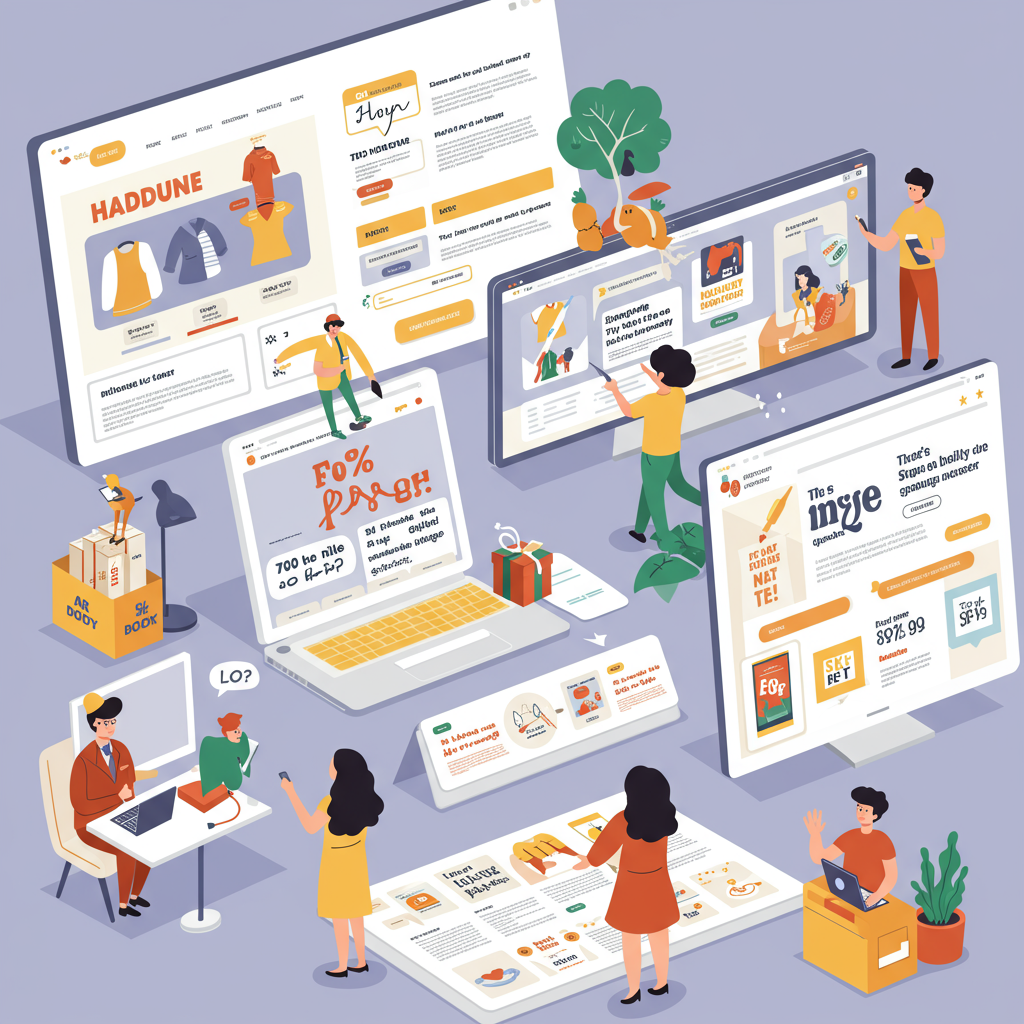Elevate your brand and boost conversions by choosing the perfect typefaces for your online shop.
As a Shopify merchant, you’re constantly looking for ways to make your store stand out and convert visitors into customers. While product quality and marketing are crucial, there’s one often-overlooked element that profoundly impacts your brand’s perception and user experience: typography.
I’ve seen firsthand how a well-chosen font can elevate a brand, making it feel professional, trustworthy, and appealing. Conversely, poor font choices can make a store look amateurish, difficult to read, and even drive potential customers away.
Typography isn’t just about making things look pretty; it’s about communication. It guides your customers’ eyes, establishes visual hierarchy, and conveys your brand’s personality even before they read a single word of your product description.
In this comprehensive guide, I want to share my insights on selecting the best fonts and implementing effective typography for your Shopify store. My aim is to help you create an online presence that not only looks great but also performs exceptionally.
The absolute golden rule of typography is readability. If your customers can’t easily read your product names, descriptions, or calls to action, they won’t stick around. This means choosing fonts that are clear, well-spaced, and appropriately sized.
Visual hierarchy is about guiding your reader’s eye. I use different font sizes, weights, and styles to indicate the importance of information. Think about your headlines, subheadings, body text, and buttons – each should have a distinct visual role.
Once you’ve chosen your fonts, stick with them. Inconsistency in typography across your store can make it look disjointed and unprofessional. I always recommend defining a clear typographic style guide for your brand.
Your fonts should reflect your brand’s personality. Are you modern and minimalist? Playful and quirky? Luxurious and elegant? The fonts you choose will instantly communicate these traits to your visitors.
Serif fonts, like Times New Roman or Georgia, have small decorative strokes (serifs) at the end of their letters. I often find them conveying a sense of tradition, elegance, and trustworthiness. They are excellent for brands aiming for a classic or sophisticated feel.
Sans-serif fonts, such as Arial, Helvetica, or Open Sans, lack these decorative strokes. I personally prefer them for their clean, modern, and minimalist aesthetic. They are highly readable on screens and are a popular choice for tech, fashion, and contemporary brands.
Script fonts mimic handwriting, ranging from elegant calligraphy to casual cursive. While beautiful, I advise using them sparingly, perhaps for logos, special headings, or decorative elements, as they can be difficult to read in large blocks of text.
These fonts are designed for impact and often have unique, eye-catching characteristics. I use them for headlines, posters, or branding elements where you want to make a strong statement, but never for body text due to their low readability.
Shopify themes often come with a curated selection of Google Fonts, which is fantastic because they are free, web-optimized, and offer a vast variety.
For body text and general use, I frequently recommend Open Sans, Lato, Montserrat, or Roboto. They are all highly readable, versatile, and look great across different devices.
If you’re leaning towards a more classic look, Playfair Display (for headings) or Merriweather (for body text) are excellent choices that I’ve seen work well on Shopify stores.
Start by thinking about your brand’s core values and target audience. A luxury jewelry brand will likely choose different fonts than a quirky pet supply store.
Consider the products you sell. Are they high-tech gadgets, handmade crafts, or gourmet foods? The font should resonate with the product’s nature.
Who are you trying to reach? Younger audiences might respond well to modern, clean fonts, while an older demographic might prefer more traditional, highly legible options.
The magic often happens when you pair two or three fonts effectively. My go-to strategy is to pair a strong, distinctive heading font with a highly readable body font.
I often pair a sans-serif heading with a serif body, or vice-versa, to create contrast and visual interest. Another safe bet is to use different weights or styles of the *same* font family for headings and body text.
Don’t make your body text too small. I recommend a minimum of 16px for body text on desktop, scaling appropriately for mobile. Headlines should be significantly larger to create hierarchy.
This is the space between lines of text. Too little, and text feels cramped; too much, and it looks disconnected. I aim for a line height of 1.5 to 1.8 times the font size for optimal readability.
Adjusting the space between letters can improve readability, especially for headlines. I use it subtly; too much or too little can make text hard to read.
A significant portion of your traffic will be on mobile. Always check how your fonts look on smaller screens. Ensure they remain legible and don’t cause layout issues.
Ensure there’s sufficient contrast between your text color and background color. Black text on a white background is always safe, but if you use colors, check for accessibility.
Google Fonts is my primary recommendation for finding free, high-quality fonts. For pairing ideas, I often use tools like Fontjoy or Google Fonts’ own pairing suggestions.
After making changes, I always test my store on different devices and browsers. What looks good on your desktop might not translate well to a smartphone. Get feedback from others too!
Investing time in your store’s typography is an investment in your brand’s credibility and your customers’ experience. It’s a subtle yet powerful way to communicate your professionalism and attention to detail.
I truly believe that mastering typography can significantly impact your Shopify store’s success. What are your thoughts on this article? Did I miss anything crucial, or do you have a favorite font pairing you swear by? I’d love to hear your perspective!






